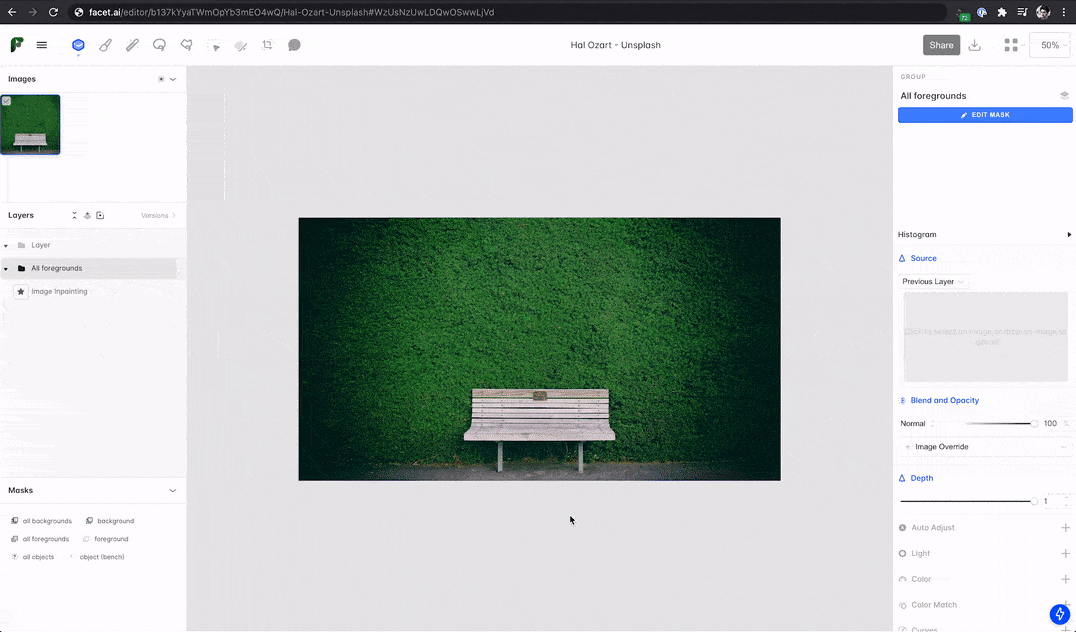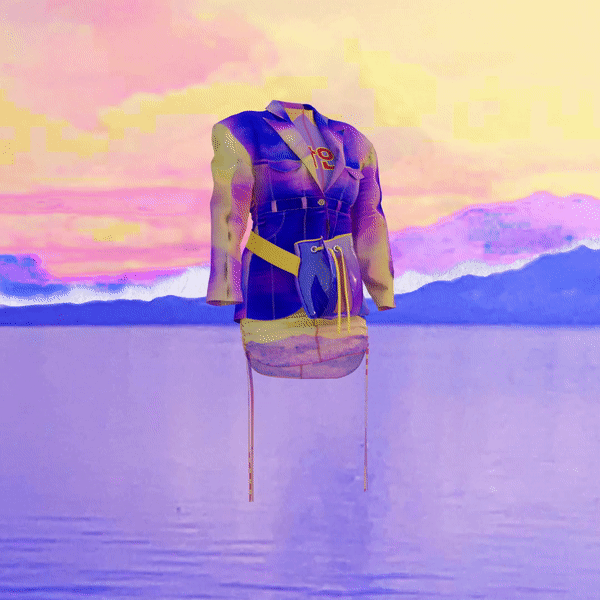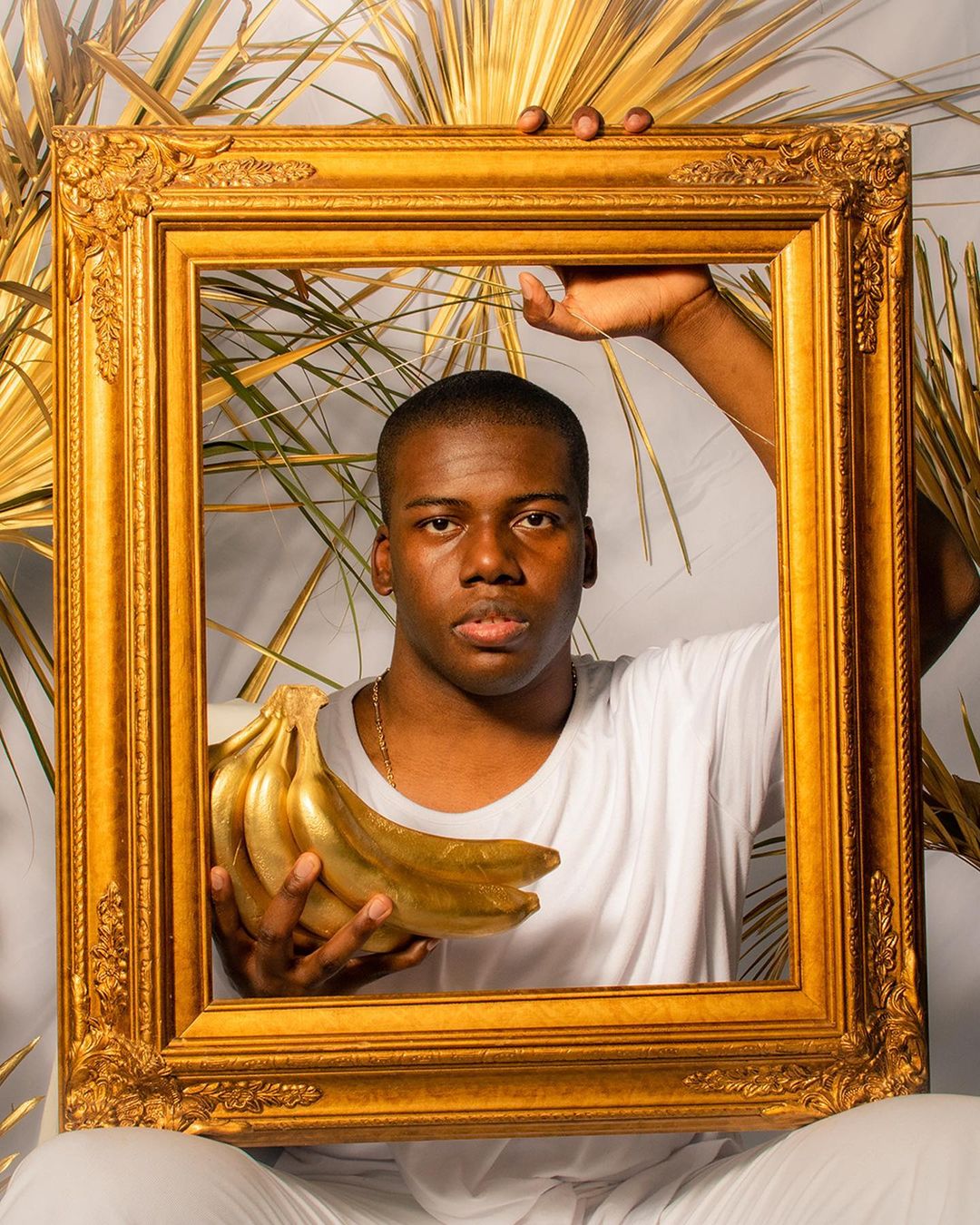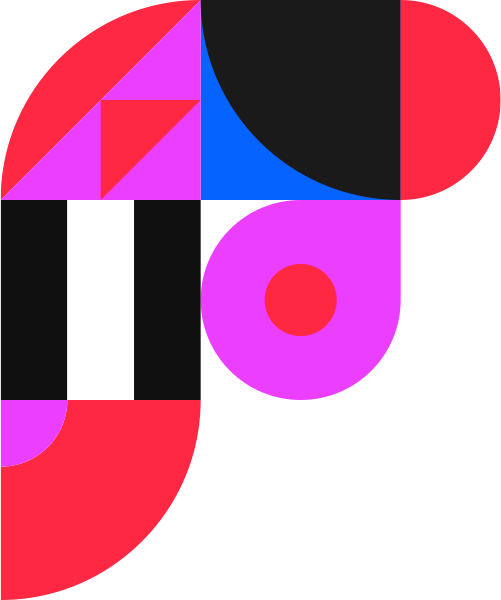Launching content-aware inpainting & looking forward to 2021!
2020 is rapidly wrapping up and it’s been a whirlwind year for content-aware image editing at Facet!

Dear Facet Community,
2020 is rapidly wrapping up and it’s been a whirlwind year for content-aware image editing at Facet! We are simply in awe of the thousands of creatives who have poured innumerable hours into the product, creating blazingly fresh work and lending their professional insights and time to help make Facet an incredible and original experience.
The median Facet user is logged in and editing in the app 3 or more times a week, spending over an hour per session. This is incredibly humbling for our team and we're super excited to start bringing more folks on board.

In April we announced our Call for Artists program: one-time grants for work pushing the boundary of what is possible using Facet. Over 2500 photographers, creatives, motion graphics designers, students and professionals have applied, and we expect to continue the program in 2021.
In May we launched Facet Studio in early access and by June we had already hit 200,000 Automasks (if every mask would have taken ~1 minute to create manually in Photoshop, we’d have already saved our users a combined 2 years of their lives).
In August we launched an embedded arist-in-residence program and in September we launched invites and galleries, asking how your creative process would change if your editor knew the name of every pixel.
In October and November we expanded our early access program beyond photographers to marketers and motion graphics designers. Along the way we announced a whole slew of major product launches: sharing & collaboration, galleries, artboards, split toning, dehaze, smart selection, as well as complete re-detailing of our UI language.
In December? Content-aware inpainting is rolling out to users on our experimental channel. See more detail below!
What's next for 2021? We're growing the team and we've got an ambitious roadmap, including something big cooking up for January that we can't wait to share it with you.

Content-aware inpainting
Facet's approach to content-aware inpainting is rolling out to our early access users. This is easily one of the most common feature requests we've been getting.
When used with one-click Automasking, content aware inpainting is OP and can dramatically reduce image clutter in a fraction of the time. And that's not all, combined with our upcoming long-tail content id, you can track and replace distractor objects across all images in the entire batch. Didn't like that trashcan in the background of the 35 images you shot? Don't worry we got you covered.

Facet for video: Studio Krankal and Grace Kwon
Native video editing features are still a few months out on our roadmap, but that hasn't stopped artists from leveraging Facet features to produce motion graphics and short videos. Want to take a peek? Here is Nino Graff, an art director and motion designer at Studio Krankal:
"I mixed reworked old footages with a bit of 3D and typography. I choose the 1933 movie King Kong with that legendary scene of the Empire State Building, and applied a style transfer of a banana peel to the image sequences. Then, I modelised and texturized a 3D banana using this output, and added some 3D typography."
Check out more of their work at Studio Krankal.

And here is Grace Kwon, an interdisciplinary designer focused on materiality, fashion, and interactive platforms:
"I designed and patterned digital garments on CLO 3D, a 3D garment simulator. After finishing up the motion and fit of the 3D garments, I imported the pattern outlines into Facet to create the textures. Because of the AI masking, it was super easy to transfer images on the patterns. For the jacket, I used the Style Transfer, Color Match, and Adjust Palette Tools. For the dress and the background, I manipulated the lighting and colors with different layers of masks."
Check out more of her work here.

Facet Specs #4: Cornelius Tulloch on what makes us human
“That is something that I always try to explore in my work. What are these things that make us human? What are the dualities that we can have? And I feel like that having no boundaries defines my personality. While I'm very expressive of who I am, I can be this way one moment and that way the next”.
Last month, Uel Kaufman sits down with Cornelius Tulloch to discuss his unique work blending photography, painting, architecture and design. "Identity and the future are never fixed, Cornelius seems to be saying, but energy can be found in pursuing ambiguity with the confidence to explore depths outside of the framework of the everyday."
Read the full interview here.
Come work with us!
We're hiring across the board in engineering, product and design. If you or someone you know might be interested, please consider applying, especially if you have experience with webgl, wasm, pytorch, tensorflow, typescript, or rust. Learn more at facet.ai/jobs.
Facet’s object detection algorithms automatically understand the layout and composition of objects, edges, foregrounds, backgrounds, textures, colors and lighting. Assets are separated and labeled into discrete layers right away and these can be edited across batches of hundreds images in a single click.
In and around Facet’s native AI are sophisticated professional editing tools which work seamlessly together to help artists bring their visual ideas into a novel, exploratory space. Facet is not only an evolutionary step in image editing, but is offering ways of reconceptualizing how machine learning understands, assists and amplifies human creativity.

